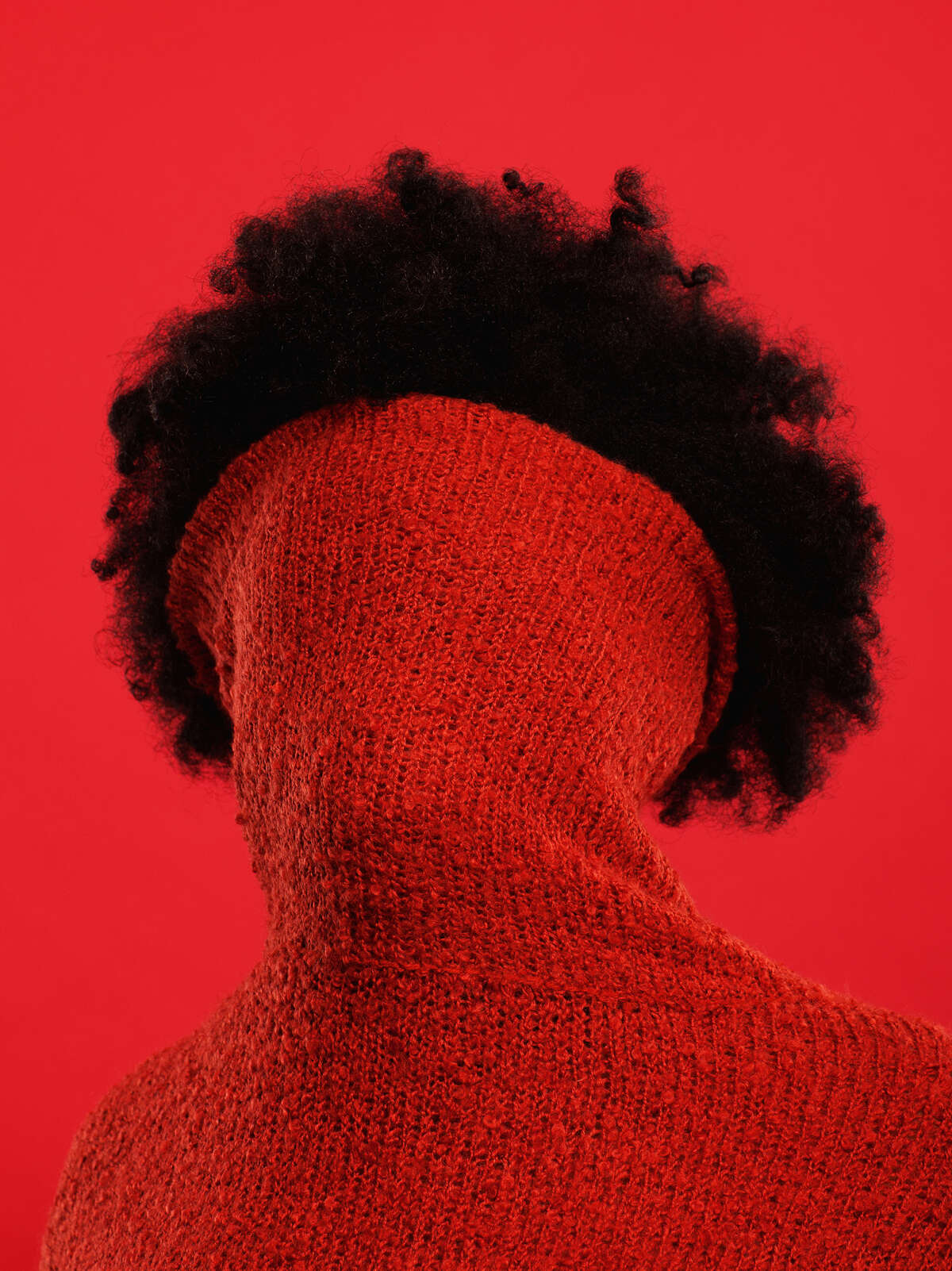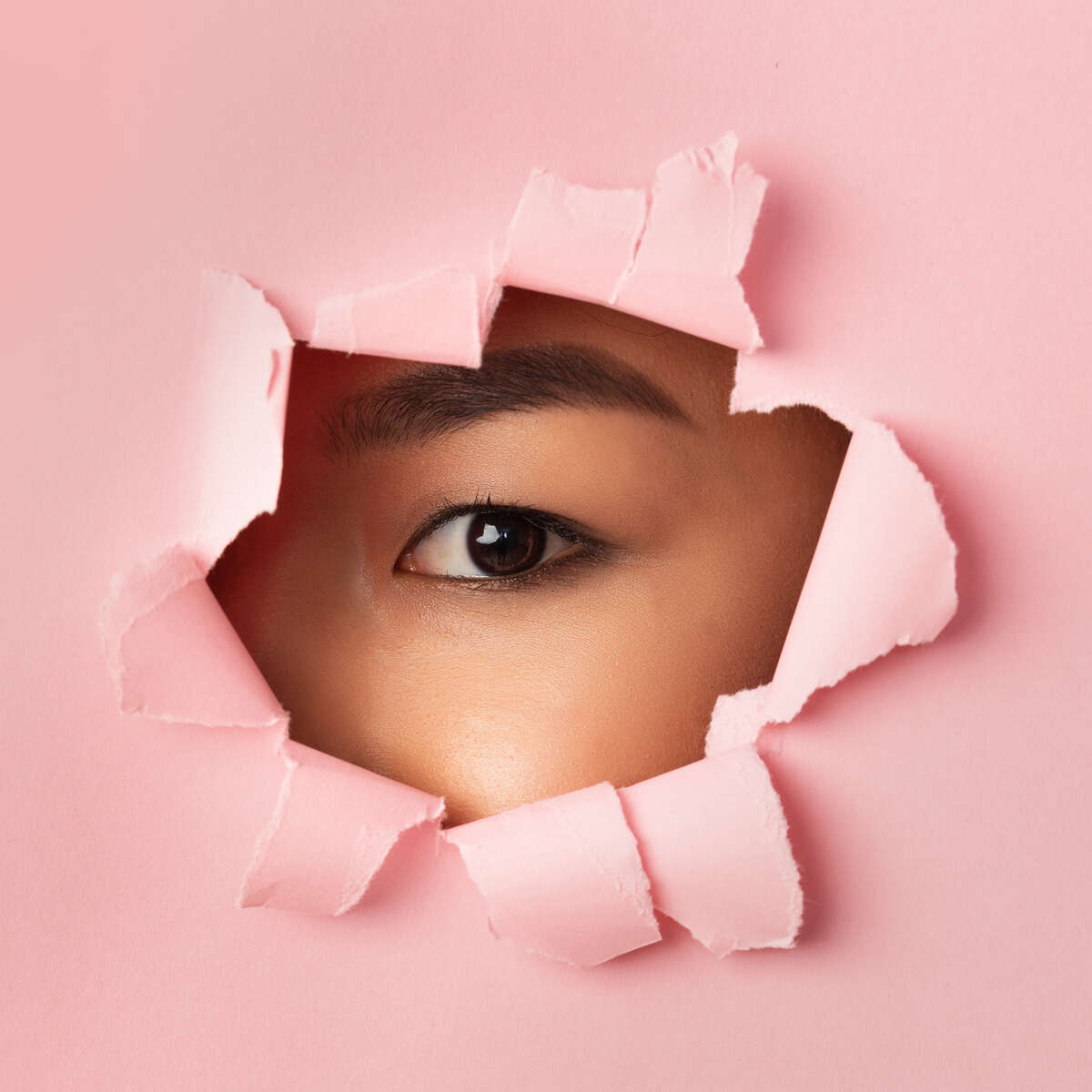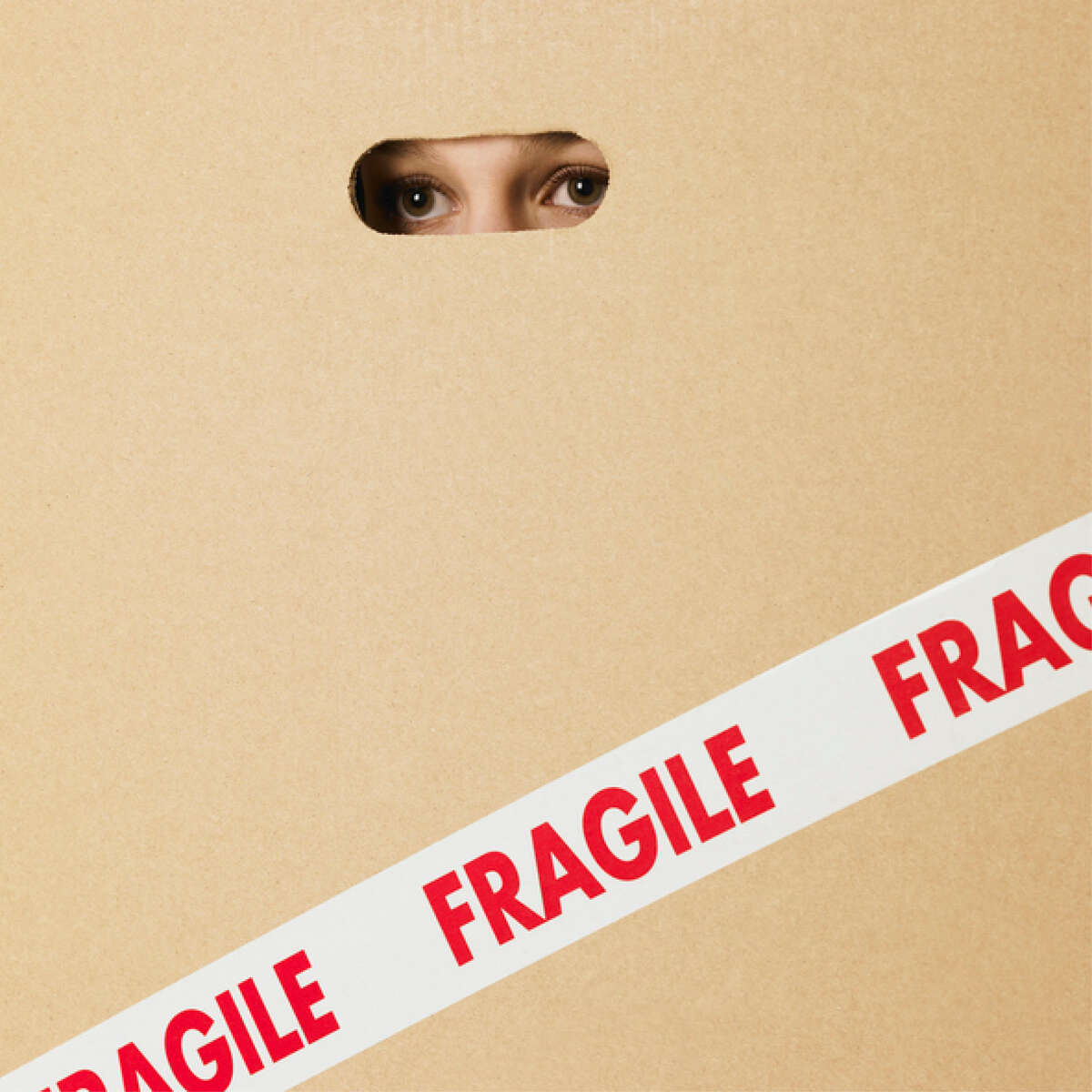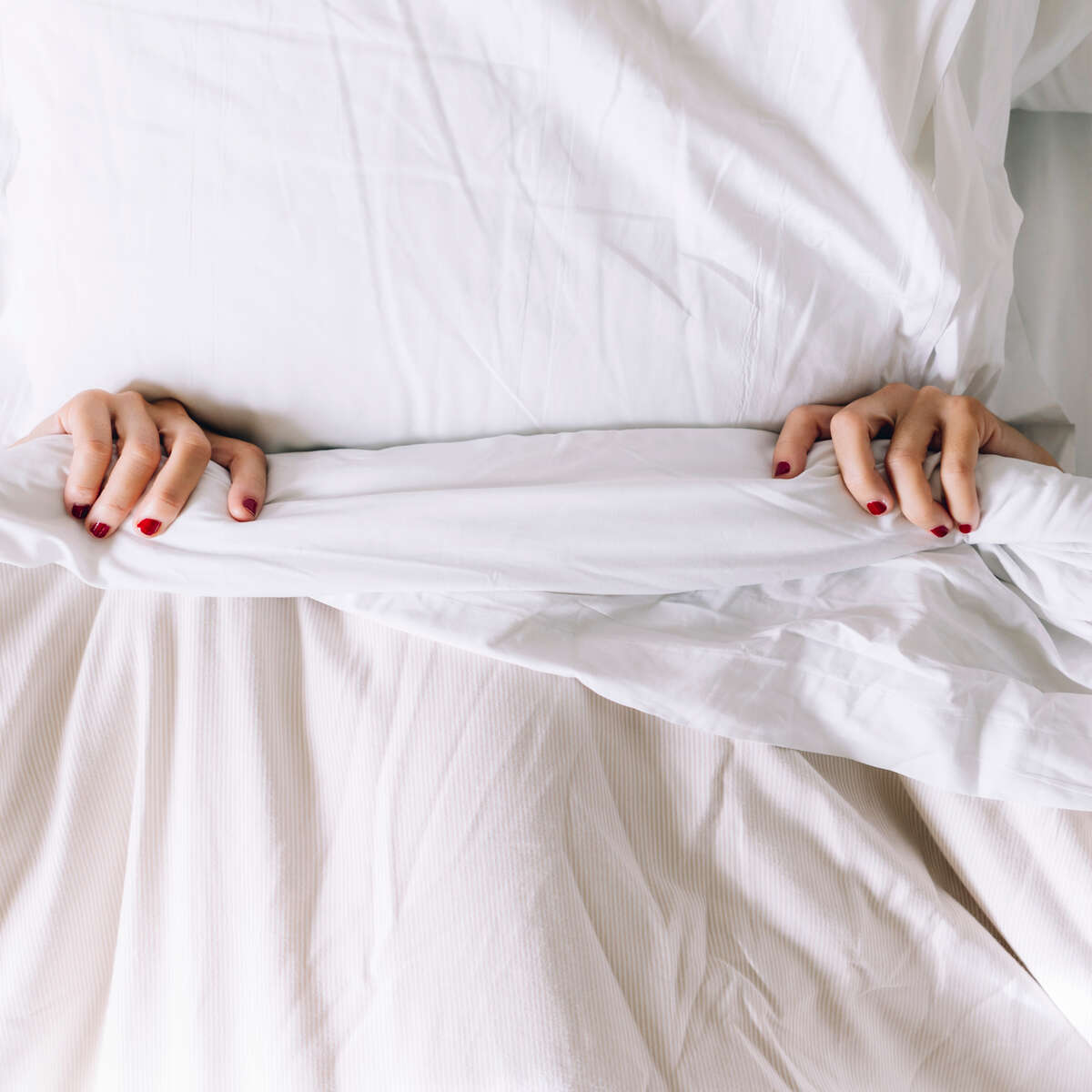feature
Can I come out now?
A return to ‘normal’ life is finally within reach – so why aren’t we jumping for joy? Stylist investigates the phenomenon of re-entry anxiety
words: Meena alexander

“When this is all over…” How many times have you uttered those words over the past year, picturing that hallowed date when you’d dust off your favourite dress and skip hand-in-hand with your best friends to the nearest bar. Throughout lockdown we’ve kept ourselves going by looking ahead to freedom, eager to make up for lost time. It would be the Roaring 20s all over again, we vowed. Partying like it’s 1999. We were so ready.
Now, with the Stay at Home order behind us and a post-lockdown landscape finally coming into view, it’s impossible to deny that the mood has changed. If the government’s plan goes smoothly, we could be gathering in groups of 30 outdoors by 17 May and free of social distancing measures altogether by 21 June. There’s joy, of course, at the news of Covid rates dropping and the country no longer operating in full crisis mode, but as those dates edge nearer, there’s something else niggling away at the back of our minds too. Anxiety. Counterintuitive as it seems, the thought of returning to a life we haven’t lived for over a year is filling lots of us with something like dread.
Gabby*, 29, felt a wave of worry hit her when the roadmap was announced. “I was actually annoyed at myself, because I’d spent the better part of a year desperately missing my former life – I haven’t hugged my family, danced with my friends or had an IRL coffee with a colleague in 10 months. Now an end is in sight, an objectively good thing is happening, and yet I’m struggling to feel excited about it.”
we've become used to the relative safety of our own homes

we've become used to the relative safety of our own homes
For Shae Billings, 32, it’s the idea of reverting back to her busy pre-pandemic schedule that’s overwhelming. “There’s just so much uncertainty,” she says. “I’ve found lockdown tough, but at least I know what to expect now: I get up, work at my desk, go for my daily walk, Facetime my mum. It’s a comfortable routine. I can’t believe I used to get on a train to central London every morning, then meet up with people every evening. I want to be pumped about restrictions easing, but I’m exhausted just thinking about it.”
It’s clear we’re creatures of habit, even when that habit was unpleasant at first. The UCL Covid-19 Social Study found that while almost all of us missed meeting up with friends and going out for meals during the first lockdown, that dropped to 60% in Lockdown Three as we settled into a new normal. We’ve become used to the safety of our four walls, and there’s a tangible reason so many of us are feeling wobbly about leaving them: a psychological phenomenon experts are calling ‘re-entry anxiety’.
“Most of us have an uncomfortable relationship with change because familiarity gives us a false sense of security and control – it’s an evolutionary defence mechanism,” explains Julia Samuel, leading psychotherapist and author of This Too Shall Pass. “When we’re confronted with a change to routine – even if it’s something positive like moving in with a partner or, indeed, unlocking – we get these little spikes of fear as we head into alien territory.”
“Most of us have an uncomfortable relationship with change”
This feeling has shades of ‘re-entry syndrome’, a term coined in the 1960s by American psychologists Jeanne and John Gullahorn while studying people who’d been away from home for long periods, charting the emotional toll of rejoining society. They developed the ‘W curve’ of reintegration: in its simplest form, a graph of mental wellbeing that dips when we leave the society we know, briefly peaks when we rejoin it, but dips again as we struggle to align our new selves with our old lives. Up until now it’s largely been associated with the experiences of Antarctic explorers, long-term prisoners and soldiers returning from war – but as we all emerge, blinking, from a year spent in our own little bubbles, we’re experiencing a form of re-entry syndrome en masse.
Feeling the fear
It’s been a stressful year. A study conducted by King’s College London found that 57% of people in the UK reported symptoms of anxiety during lockdown, with women, young people and those in high-risk categories suffering most. And it’s little surprise, because the pandemic has created the perfect environment for fear to thrive: hyperawareness of spreading the virus, confusing government messaging and a chronic lack of access to one of our most vital coping mechanisms: other people. Yes, we’ve been anxious for a while now – and unfortunately, it’s not a feeling we can shed like an old skin at the first sign of freedom.
“It takes time for the human brain to learn new behaviours,” explains psychologist Dr Tara Quinn-Cirillo. “If we think back to March last year, there was suddenly this perceived threat and we had to learn how to adapt to social distancing and working from home, which took a lot of work. After many months of adhering to that new way of living, it’s not realistic to expect to just snap back into your pre-pandemic routine.”
12 months of feeling anxious is hard to shake off

12 months of feeling anxious is hard to shake off
According to a landmark UCL study from 2010, the speed at which each of us can adapt to change varies greatly – it can take between 18 and 254 days for behaviour or thought patterns to become automatic – so go easy on yourself if you’re not immediately able to flick the switch from ‘hermit’ to ‘party girl’. Lots of us are already feeling the pressure to be our most sparkling selves, but a year of glitchy Zoom calls and communicating with your eyebrows from behind a face mask does not a social butterfly make – even if you’re an out-and-out extrovert like Sam Rhodes, 24. “People who know me assume I can’t wait to socialise, so my WhatsApp groups are full of picnic plans and pub garden bookings already,” they say. “There’s this huge pressure to see everyone and do everything as soon as restrictions lift, and it feels like I can’t say no.”
It’s not going to be as simple as diving back in – and that’s nothing to feel guilty about. “Reconnecting with your social identity will take as much psychological effort as packing it up and putting it away did in the first lockdown,” explains Samuel. “Remember that initial discomfort of not being able to go out? Well, that’s absolutely equal to the discomfort of working yourself up to go out again after a whole year.”
What a difference a year makes
Underpinning re-entry anxiety is an acute sense that we are now very different people from who we were in March 2020. According to UCL’s study, only 9% of us plan to return to living exactly as we did before Covid hit. We’ve survived a lot this past year, spending more time alone and gaining fresh perspective – so envisioning the new post-pandemic version of ourselves stepping back into our old lives is difficult. It’s like trying to fit a square peg into a round hole.
“we are now very different people from who we were in March 2020”
“Many of us have re-evaluated aspects of our lives over the past year, whether that be our social circles, how we want to work or the pace at which we want to live,” says Quinn-Cirillo. For Gabby, it’s been revelatory. “There’s so much I want to do differently now,” she says. “I realised, when all the perks and fun events were stripped away, that I wasn’t actually enjoying my job in publishing. I’ve also reconsidered living in the city – I moved back in with my mum and spending time walking around the moors near her house has been a joy. I know that I’m going to have to act on these realisations when lockdown lifts, and that makes it all the more daunting.”
Samuel makes the point that living through a global pandemic has changed all of us in one crucial way. “Once you know you can have your whole life shut down at a moment’s notice, you can’t unknow that. And so it forms part of who you are and how you look at the future.” That’s not to say we’ll now be expecting the worst at every turn, she explains. “Rather, we’ve got this added intensity about not wasting our lives, and prioritising the things that matter. For many of us, what gives our life meaning has shifted.”
The final hurdle
Thanks to a little quirk of the human condition neuroscientists called ‘hedonic adaptation’, when we experience a shake-up of our well-worn routine, our wellbeing inevitably dips; it happened when we first went into lockdown, and it’s likely to happen when we come out of it for good. And this moment – when we can only speculate about what post-pandemic life might be like, and haven’t yet had the dopamine boost of laughing or hugging or soaking up the chatter of a busy room to soothe our whirring brains – was always going to be tough.
The trick to navigating re-entry, Quinn-Cirillo says, is taking back control. “Autonomy is key at this stage,” she says. “While there is obviously a government framework for exiting lockdown, we can plan how we individually move forward within that.”
if you'd rather hide under your duvet than head to the pub you're not alone

if you'd rather hide under your duvet than head to the pub you're not alone
Samuel agrees, recommending that, if you’re feeling anxious, you use ‘exposure therapy’ to ease yourself back in at a pace that suits you. “Focus on the things that gave you pleasure before, and recognise what things feel especially difficult,” she says. “If you’re worried you’re no longer sociable, for example, meet one close friend who you have a really good relationship with first, then reflect on what you enjoyed about it afterwards. Do that a few times until the alarm bell in your head starts to quieten, then build on it – maybe have dinner with three people next.” This way, we recreate positive associations around going out and socialising again until it becomes second nature.
There’s been both light and dark throughout the pandemic, and as much as we all want to dive headfirst into the joy of freedom, this turning point will be no different. It’s vital, Samuel says, that we can hold both the bad and the good side by side – then choose to focus on the good. “Don’t shy away from the darkness. Look at it and name it, whatever it is for you – post-pandemic trauma, fear of what comes next – then intentionally turn your attention to hope. Keep your skyline short – ‘I hope today I can hang out with my friend in the park’, say – but always positive. The more your hopes become reality, the more confident in the future you’ll feel.”